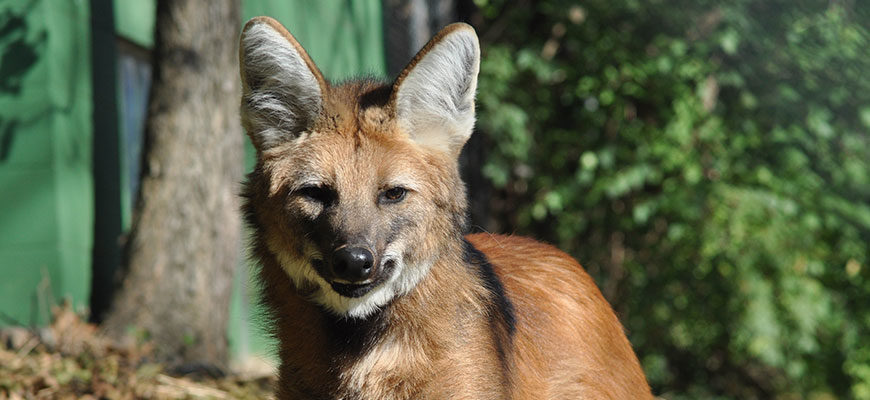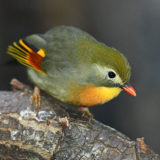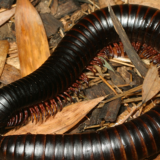Scientific name: Chrysocyon brachyurus
CLASSIFICATION
Order: Carnivora
Family: Canidae
HABITAT & RANGE
Maned wolves live in the South American grasslands and scrub forests (Cerrado) of Brazil, northern Argentina, Paraguay, eastern Bolivia and southeastern Peru.
SIZE & APPEARANCE
- Weight: up to 50 pounds
- Height: up to 39 Inches
- Ear Length: about 7 Inches
- Young are born weighing 340 to 430 grams and develop quickly.
- Maned wolves have a thick red coat, long black legs, and tall, erect ears.
REPRODUCTION
- Maned Wolves live in monogamous pairs sharing a territory.
- The male and female are known to share a territory, but are generally solitary and only come in contact during mating season.
- Gestation is similar to that of other canids and lasts approximately 65 days.
- A litter usually can contain one to five young, but average about two.
- Their eyes and ears open by day nine, their ears stand upright and they will take regurgitated food by week four, the pelage changes from black to red by week 10, they are weaned by 15 weeks, and their bodies have the proportions of adults at one year, at which time they reach sexual maturity.
DIET
- Native habitat: Maned wolves are omnivorous eaters and primarily solitary hunters. They eat seasonally abundant fruits and vegetables as well as small mammals such as rodents, rabbits and insects.
BEHAVIOR
- Maned wolves are primarily crepuscular to nocturnal.
- Mated pairs share permanent home range and remain fairly independent of one another. They hunt, travel, and rest solitarily, and are only closely associated during the breeding season.
- Urine and feces, deposited regularly in particular spots, may serve to mark territories.
PONTS OF INTEREST
- The Maned wolf is the largest canid of South America. It looks more like a long-legged fox than a wolf. Genetic studies show that it is neither fox nor true wolf, but a distinct species. It is the only member of its genus, Chrysocyon.
- Maned wolf urine has a powerful aroma, reminding many humans of the way skunks smell.
- The Maned wolves upper carnassial (shearing teeth) are reduced, its upper incisors weak, and its canines are long and slender.
- They do not howl, but instead emit loud barks or roar barks to let their mate know where they are, and to warn other wolves to stay away.
STATUS
- The Maned Wolf is listed as Near Threatened in its native range by the IUCN.
- Habitat destruction by agricultural development is the primary threat to Maned wolves.
- Other threats include: human persecution due to livestock losses and cultural beliefs; increasing vehicular traffic in highways resulting in road kills.
- The current population of Maned Wolves is estimated at approximately 17,000 mature individuals, with the majority of the population (>90%) in Brazil.
SOURCES






